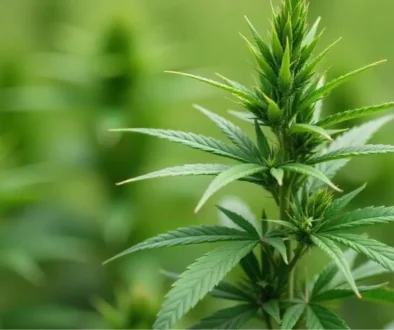Oklahoma – the Cannabis-Friendly State – State Tax Overview
Authors: Simon Menkes, Rachel Wright, and Abraham Finberg (Licensed CPA’s in California)
___________________________________________________
Welcome to Oklahoma, the Sooner State:
In 1889, the federal government opened up the Oklahoma District’s Unassigned Lands on a first-come, first-served basis. Would-be settlers entered the state at the time and date set by the President, and those that arrived at available land first were able to stake a claim and become farm owners. However, many snuck in illegally before the correct date and hid out, arriving sooner and taking 50% of the available plots. In addition, there were legal “Sooners” who had permission to enter beforehand and had an unfair advantage: deputy marshals, IRS agents, railroad employees, etc. These Sooners and their property holdings became the subject of long-running legal contests.
Despite Oklahoma’s relaxed attitude toward rule-bending at the start of its history, it is now a pretty conservative state when it comes to cannabis. Oklahoma voters legalized marijuana in 2018 under Oklahoma State Question 788, but as of this writing, only medicinal cannabis can be sold. If you’re caught without a medical marijuana card or with too much cannabis, you are forced to buy a tax stamp at a hefty cost of $3.50 per gram, or close to $100 per ounce.
Oklahoma’s Citizens Are Cannabis Friendly:
Though the State of Oklahoma takes a tough stance towards cannabis possession, its people have welcomed it with open arms. In 2020, $831 million of cannabis was sold in the Sooner State. With a population of 3.9 million, that’s sales of $210 per person. Compare that to a state often perceived as pro-cannabis, such as California. California’s sales of $111 per person, and things in the Sooner State appear to be warmer towards cannabis than first perceived.
Oklahoma’s Cannabis Taxes Are Better Than California’s Too:
Oklahoma charges both a regular sales tax and a 7% gross receipts tax on cannabis sales.[1] Compare this to California’s 15% excise tax. The gross receipts tax is not considered part of the seller’s gross sales and is exempt from sales tax (unlike California).[2] Therefore, the seller is not charged tax on tax. These differences significantly reduce the tax burden on Oklahoma’s dispensaries, making it easier to meet their tax obligations and to turn a profit.
Other Advantages of Having a Cannabis Business in Oklahoma:
The gross receipts tax doesn’t apply to wholesale sales, only retail.[3] Also, cultivators (commercial growers) can obtain an agricultural sales tax exemption permit.[4] (California’s cultivators must pay a cultivation tax of $9.65 per dry ounce.) Additionally, Oklahoma manufacturers can’t obtain a sales tax exemption permit, but they can get a processors’ sellers permit which allows them to buy marijuana exempt from sales tax.[5] Yet another plus is that the State of Oklahoma has arranged with BancFirst, the state’s largest state-chartered bank, to accept cash tax payments for an extra fee in any of its 107 locations, which may be more convenient for taxpayers.[6]
The Problem of State Income Tax in Oklahoma:
Unfortunately, Oklahoma state income tax laws conform to the Internal Revenue Code (IRC) for both individual and corporate taxation.[7] IRC Section 280(e) doesn’t allow for any deduction from gross receipts other than the Cost of Goods Sold, which means much of expenses like rent, labor, and insurance are excluded.[8] This leads to a higher state income tax in Oklahoma than in states like California that allow cannabis businesses the same deductions as any other business.
So, Is Oklahoma Actually A Low Tax State for Cannabis?
Although Oklahoma requires income taxes to be filed in conformity with IRC Section 280(e), the state has a relatively low marijuana tax which only applies at the retail level. This means that it’s a lot easier to make a profit in an Oklahoma dispensary than in a California dispensary. Once you make your profit, Oklahoma will take a higher percentage of it as income tax. However, many cannabis businesses that are struggling to become profitable in states like California are trying to survive under a heavy cannabis tax burden. With a gross receipts tax of only 7% (compared to Cali’s effective 16% with tax-on-tax) and with no cultivation taxes, it’s not hard to make a case that a cannabis business has a better chance of thriving in Oklahoma than on the shores of the Pacific.
—————————————
[1] Okla. Admin. Code § 710:65-19-216
[2] Okla. Admin. Code § 710:65-19-216
[3] Okla. Admin. Code § 310:681-5-7 (a)
[4] Okla. Admin. Code § 710:65-19-216
[5] Okla. Admin. Code § 710:65-19-216
[6] https://oklahoma.gov/content/dam/ok/en/tax/documents/resources/publications/infographics/MM-BancFirst.pdf
[7] 68 OK Stat § 68-2353 (2020)
[8] 26 U.S. Code § 280E
Disclaimer: This article has been prepared and published for informational purposes only and is not offered, nor should be construed, as legal advice.





